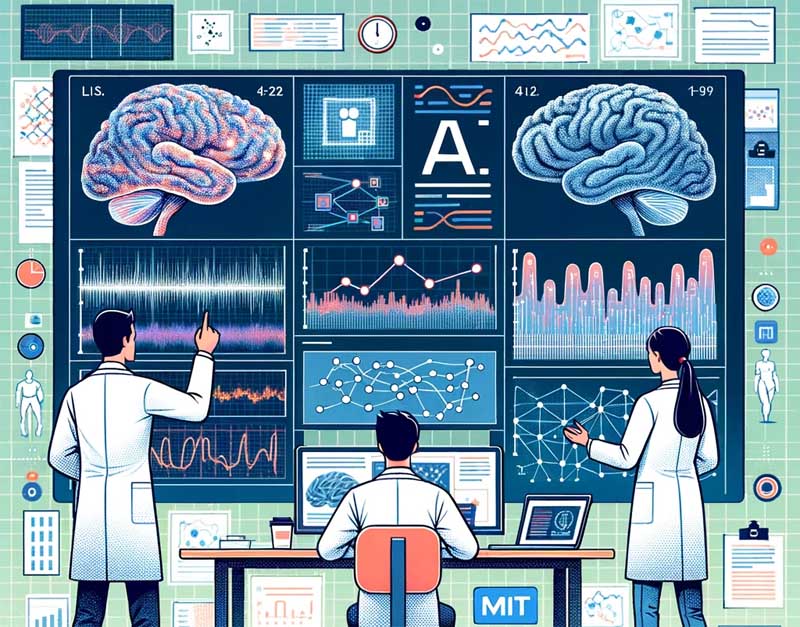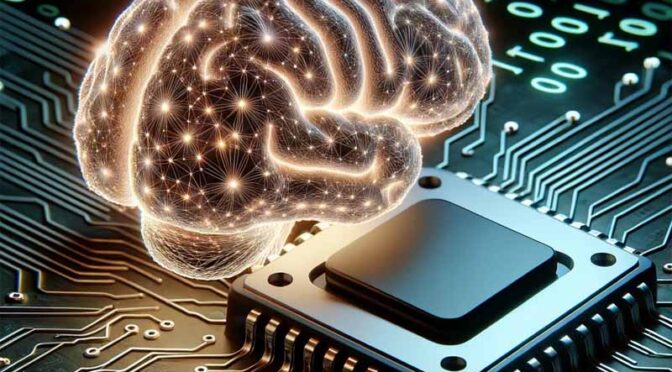MIT researchers delve into a machine learning technique, self-supervised learning, discovering its potential in mirroring the brain’s method of understanding the world. Through two focused studies, they established a noteworthy resemblance between the operation of self-supervised models and mammalian brain activity patterns, presenting an intriguing intersection of artificial intelligence and neuroscience.
Contents
- Self-Supervised Learning – A primer
- Neuroscientific Relevance
- Convergence for Enhanced Understanding
- Linking Neural Networks to Brain Functionality
- The Intersection of Self-Supervised Learning and Brain Function
Self-Supervised Learning – A primer
Self-supervised learning, originating in computer vision advancements, enables models to discern visual scenes solely based on inherent similarities and differences, devoid of labels or external data. Its significance lies in its efficiency, requiring no human-annotated data, thus representing a shift from earlier supervised learning models reliant on extensive labeled data.
Neuroscientific Relevance
The intuitive understanding our brain develops to interpret sensory information and navigate the world is believed to parallel the process of self-supervised learning. This hypothesis gained traction as the studies revealed that neural networks, when trained through a specific self-supervised learning technique, exhibited activity patterns akin to those in animal brains executing identical tasks.
Convergence for Enhanced Understanding
These findings hint at a potential shared strategy between computational models and the mammalian brain in forming representations of the physical world for accurate predictions. This intersection not only propels the development of better robotic systems but also unfolds a promising avenue for understanding brain functions more comprehensively, encapsulating a broader scope of the self-supervised learning’s impact beyond its computational origin
The information is based on the MIT News article “The brain may learn about the world the same way some computational models do“

Linking Neural Networks to Brain Functionality
The discovery of parallels between self-supervised learning in machines and the human brain’s learning trajectory represents a momentous leap in both artificial intelligence and neuroscience. This convergence, once beyond the realm of conceivable science, unveils remarkable knowledge that expands our understanding exponentially.
Historical Astonishment
Merely a few decades ago, such a discovery would have resided in the realm of pure fantasy. The notion that machines could emulate the complex, organic learning processes of the human brain was a distant, almost whimsical aspiration.
Intellectual Evolution
The findings by MIT researchers transcend the traditional boundaries of science, inviting a philosophical introspection on the ever-blurring lines between organic and artificial intelligence. This emblematic stride reiterates the boundless possibilities that lie at the nexus of neuroscience and machine learning, guiding a new epoch of intellectual evolution where machines and minds find common ground in the quest for understanding and knowledge.
The Intersection of Self-Supervised Learning and Brain Function
The resemblance between self-supervised learning in machines and the mammalian brain’s operational framework heralds a new era in neurology and brain optimization technologies. This crossover has the potential to significantly impact patient care and treatment modalities.
Neurological Insights
The understanding gleaned from these findings can lead to the development of sophisticated diagnostic tools and therapeutic interventions. By decoding the brain’s learning mechanisms, neurologists could devise personalized treatment plans for neurological disorders, enhancing the precision and effectiveness of care.
Brain Optimization Technologies
Furthermore, this fusion of artificial and organic learning processes could spawn a generation of brain optimization technologies. These could range from advanced neural prosthetics to cognitive enhancement tools, extending the boundaries of human intellectual and sensory capacities.
Patient Care Revolution
The resultant technologies could revolutionize patient care, offering hope to those with cognitive impairments or neurodegenerative conditions. The bridge between computational models and the brain’s learning pathways illuminates a path towards better understanding and treatment of complex neurological disorders, making a profound difference in the lives of patients.

